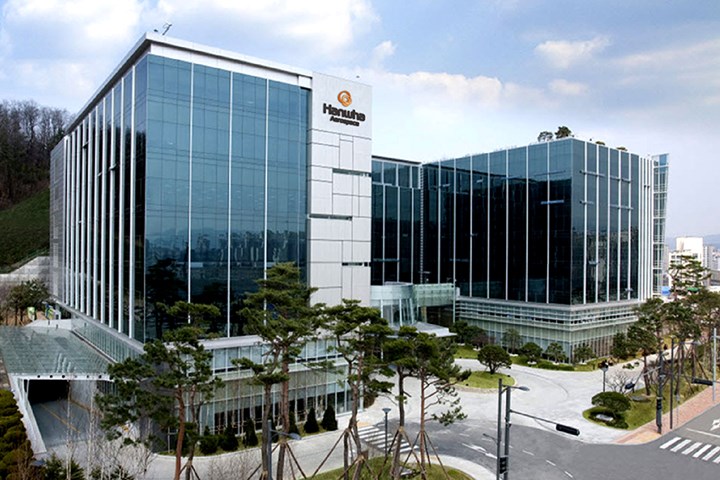Hanwha Aerospace to develop hydrogen fuel cells for urban air mobility
The company aims to secure core technologies by improving performance and reducing system weight by 2025 with aid from a consortium comprising domestic companies and research institutes.

A view of Hanwha Aerospace Pangyo R&D Center. Photo Credit: Hanwha Aerospace
Hanwha Aerospace (Changwon, South Korea), a subsidiary of Hanwha Group (Hanwha Cimarron, manufacturer of large, Type IV composite tanks, is also housed under this group), is starting to develop a hydrogen fuel cell system to be used in urban air mobility (UAM), which follows an order the company recently won for the “Fuel Cell Lightweight Technology Development for Aviation Mobility” project announced by the Ministry of Trade, Industry and Energy, Korea Energy Technology Evaluation Institute.
The four-year project costs approximately 21 billion won ($17 billion). Hanwha Aerospace plans to secure core technologies for hydrogen fuel cells for aviation by 2025, such as improving fuel cell performance and reducing system weight.
To get to this point, the company has already completed the formation of an industry-academia research consortium that includes various institutions, including domestic small- and medium-sized enterprises (SMEs) with capabilities such as hydrogen fuel cell-related technology development and patent performance.
“Through the success of this project, we will secure core technology for the UAM electric propulsion system and expand our business to electric propulsion systems for small- and medium-sized aircraft in the long term,” notes an official from Hanwha Aerospace.
A hydrogen fuel cell is a power generation system that produces electricity through a chemical reaction between hydrogen and oxygen. Unlike conventional fossil fuels, only water is a by-products. Hydrogen fuel cells are also lighter in weight compared to existing lithium-ion batteries, and maintain high energy densities, extending operation time and distance. Nevertheless, Hanwha Aerospace says developments can be difficult when applied to aviation, as the energy source has to be lighter than existing fuel cell systems.
Hanwha Aerospace shows confidence in the project, citing its rich development experience and advanced technology accumulated through its aerospace engine business, including the Korean launch vehicle Nuri (KSLV-II) and the Korean fighter Boramae (KF-21) engine, as well as various engine parts for civil aircraft.
Related Content
-
Carbon fiber in pressure vessels for hydrogen
The emerging H2 economy drives tank development for aircraft, ships and gas transport.
-
Materials & Processes: Fabrication methods
There are numerous methods for fabricating composite components. Selection of a method for a particular part, therefore, will depend on the materials, the part design and end-use or application. Here's a guide to selection.
-
Infinite Composites: Type V tanks for space, hydrogen, automotive and more
After a decade of proving its linerless, weight-saving composite tanks with NASA and more than 30 aerospace companies, this CryoSphere pioneer is scaling for growth in commercial space and sustainable transportation on Earth.












.jpg;maxWidth=300;quality=90)



